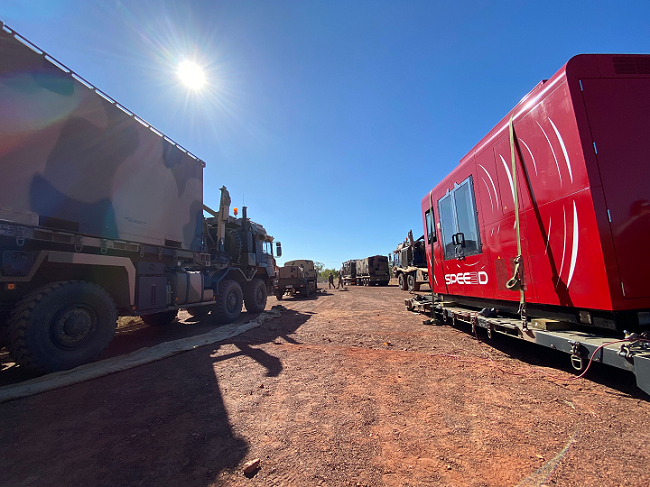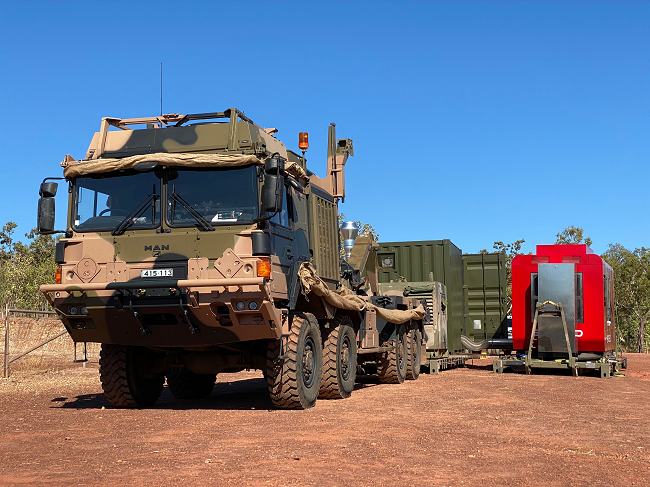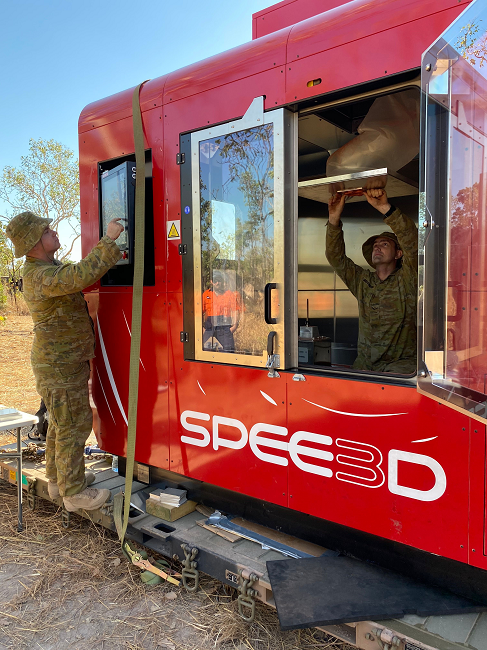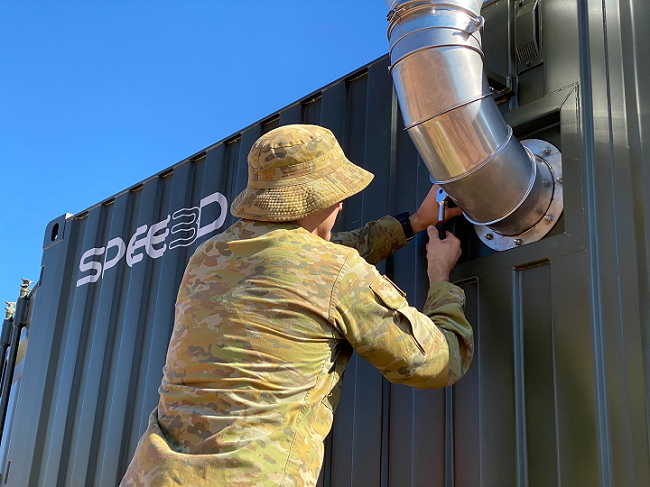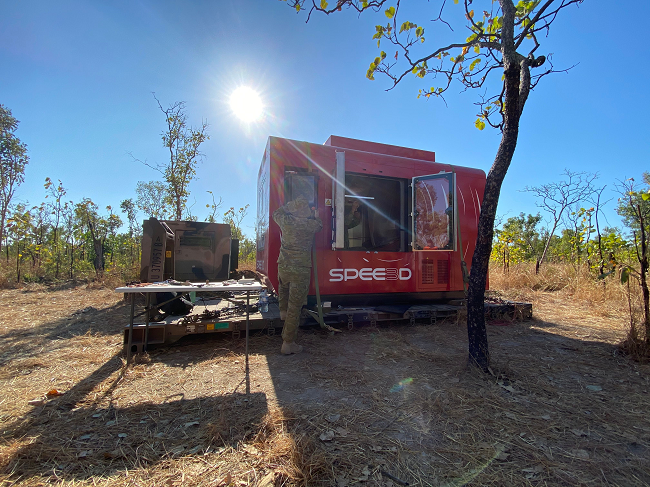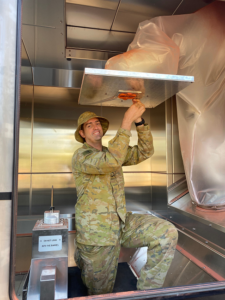In November of 2019, Melbourne startup SPEE3D announced that the Royal Australian Navy had decided to deploy its patented supersonic 3D deposition technology for super-sized metal 3D printing in a trial program, in order to streamline patrol vessel maintenance.
Word traveled fast about the company’s large-scale WarpSPEE3D, which can print parts up to 1 x 0.7 m, and the Australian Army invested $1.5 million into SPEE3D this winter. The Australian Army entered into a 12-month trial with the startup, which worked with the Advanced Manufacturing Alliance (AMA), Charles Darwin University (CDU), and soldiers from the Australian Army 1st Brigade to deliver the pilot program.
The purpose of the partnership was to make more unique metal parts available to the Army than the typical supply chain is able to do. Now, SPEE3D announced that its WarpSPEE3D metal printer passed a major test in the program: the Army rapidly deployed the system during a successful field exercise 120 km southeast of Darwin.
“The first field deployment of WarpSPEE3D was an important milestone for SPEE3D. While our equipment was initially designed for industrial use, this trial proved that our equipment is actually very robust and can endure harsh conditions and rough handling very well,” SPEE3D CEO Byron Kennedy stated in a press release. “We look forward to future exercises and continuing to learn how we best serve the Australian Army and defence industry.”
SPEE3D’s innovative 3D printers leverage cold spray technology in a patented process to fabricate more cost-effective industrial metal parts at a much faster rate of speed. In fact, the WarpSPEE3D can print parts that weigh up to 40 kg at a breakneck speed of 100 grams a minute. Instead of using costly gasses and lasers, SPEE3D’s technology uses kinetic energy, which is why its printers can be used to fabricate parts in the field.
1st Combat Service Support Battalion (1 CSSB) Commanding Officer, Lieutenant Colonel Kane Wright said of the trial program, “This phase has seen the 3D printing capability deployed to the field, alongside vital military equipment, contributing to the mission during this training cycle.The ability to print repair parts in an environment like this has the potential to significantly reduce our footprint and repair damaged equipment – on the spot – to get us back to our main priority.”
The WarpSPEE3D arrived in the Northern Territory earlier this month and was installed at the Australian Army’s Robertson Barracks. Only a week later, 1 CSSB soldiers packed it back up and brought it out into the bush for a three-day trial at the Mount Bundey field training area, where it was unloaded onto multiple terrains and maneuvered around to different locations in the bush.
Each time, the soldiers were able to unload the massive printer and set it up to print within just 30 minutes, then use it to successfully fabricate an assortment of different parts. It seems that this year-long trial is going very well, since the goal was to test how feasible it was to deploy the large-scale metal 3D printer on base and out in the field.
“This is a great story of a Territory company making it big. Innovation such as the WarpSPEE3D puts the Northern Territory on the map, and positions us as a jobs powerhouse for advanced manufacturing in Australia,” said Northern Territory Chief Minister Michael Gunner. “This is just one example of how the Northern Territory can be the comeback capital of Australia.”
This program truly demonstrates the potential of SPEE3D’s breakthrough large-scale metal 3D printing for military deployment situations.
(Source/Images: SPEE3D)
Subscribe to Our Email Newsletter
Stay up-to-date on all the latest news from the 3D printing industry and receive information and offers from third party vendors.
You May Also Like
3D Printing Financials: Fathom Struggles in Financial Quicksand During Critical Transition
Facing a year of key transitions and financial pressures, Fathom (Nasdaq: FTHM) has filed its annual report for 2023 with the U.S. Securities and Exchange Commission (SEC). The document outlines...
Latest Earnings Overview for Australian 3D Printing Firms Titomic and AML3D
Australian 3D printing manufacturing firms Titomic (ASX: TTT) and AML3D (ASX: AL3) reported their financial results for the period from July to December 2023, marking the first half of their...
3D Printing Webinar and Event Roundup: April 7, 2024
Webinars and events in the 3D printing industry are picking back up this week! Sea-Air-Space is coming to Maryland, and SAE International is sponsoring a 3D Systems webinar about 3D...
3D Printing Financials: Unpacking Farsoon and BLT’s 2023 Performance
In the Chinese 3D printing industry, two companies, Farsoon (SHA: 688433) and Bright Laser Technologies, or BLT (SHA: 688333), have recently unveiled their full-year earnings for 2023. Farsoon reported increases...


